Reproductive justice is the right to control our bodies, reproduction (or lack thereof), and sexual health. It also includes the right to parent a child in a healthy and safe environment, if they choose to have kids. It is a movement that emphasizes bodily autonomy, that women have a choice in whether or not to have kids, and that everyone has a right to contraception.
While the reproductive rights movement emphasized individual choice, such as the choice to go on birth control or not, reproductive justice fights against the socioeconomic factors that make these choices less clear cut. For example, a woman may want to go on birth control, but her insurance may not cover it, or she may live far away from a doctor’s office, rendering her incapable of seeing the doctor to get the prescription. The movement is also inclusive of societal pressures.
The reproductive justice movement was a reaction to the reproductive rights movement of the 1970’s. Women of color, poor women, and LGBTQ+ folks felt left out of discussions within the reproductive rights movement. While reproductive rights tended to focus on choice, reproductive justice recognizes societal, economical, historical, and financial reasons why some women could not make free choices about their reproduction. It includes things like education level, occupation, race, class, sexual orientation, and gender affect one’s ability to make free choices about their reproductive health, something that is absent in the reproductive health movement. It is an all-encompassing movement, going beyond reproductive health and including contraception access, appropriate pre- and post-natal care, alternative birth control options, resources for those affected by domestic violence, adequate wages, and safe homes for everyone.
Contraception can help protect against pregnancy. There are many forms, including combined birth control pills, IUD’s, patches, rings, and condoms. Some are protective against STIs as well, such as condoms, but most are not. Contraception requires consistency, such as using a condom during every sexual encounter, taking a birth control pill every day, or getting the birth control shot every few months. Most contraception is used by women/those AFAB, with the only exception being external condoms.
Need help figuring out which method is best for you? Not sure how they measure up in relation to cost, side effects, STI prevention, or ease of use? Check this tool out – it allows you to compare up to three methods side-by- side!
https://www.bedsider.org/birth-control/side_by_side
NOTE: To learn more about condoms, please visit our “Safer Sex” page:
https://wp.geneseo.edu/sexed/sexual-health-topics/safer-sex/
Combined Birth Control Pill
What it is: A pill taken orally at the same time every day that contains both estrogen and progesterone. When taken correctly, it’s 99% effective at preventing pregnancy. Realistically, for most people on it, it’s closer to 91% effective.
How it works: By preventing the ovary from releasing an egg every month. It also makes it more difficult for sperm to reach the ovary and for an egg to implant on the uterine wall.
How to get it: The combined pill is currently only available by prescription. There are dozens of options available, with many being covered by insurance.
Side effects: Side effects vary wildly between patients and different pill options. Some people have zero side effects with one pill, but could have severe side effects with another one. It is highly dependent on the patient. Additionally, it often takes a few prescriptions to find the pill that’s best for the patient. Some common side effects include nausea, headaches, mood changes, depression, anxiety, acne, and breakthrough bleeding (bleeding between periods). Combined pills also put one at a higher risk for blood clots. Many side effects will go away after the first few months of taking the pill, however if they are severe/unbearable, it’s best to see your healthcare provider to discuss a prescription change. Some medications can also make oral birth control pills less ineffective, which a provider will be able to explain.
Birth control pills can also allow people to skip their periods if they do not take the non-hormonal pills during the last week of the month. Some prescriptions do not even have the non-hormonal pills during the last week of the month.
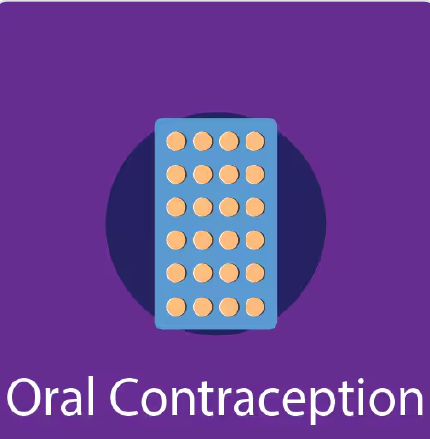
Progesterone-Only Pill (Minipill)
What it is: Another version of the birth control pill that only contains progesterone. It is taken the same exact way as the combined pill, however there is a much smaller time window when it can be taken to continue to be effective. Also similarly to the combined pill, it’s 99% effective at preventing pregnancy when used consistently and correctly. However, typical use is closer to 91% effective.
How it works: This pill works by thickening cervical mucus to stop the sperm from reaching the egg.
How to get it: Most options are available by prescription only, but the FDA recently approved an OTC form of the progesterone-only pill called Opill.
Side effects: Just like the combined pill, they vary between patients. Some common ones include acne, breast tenderness/enlargement, mood changes, headaches, depression, nausea, and ovarian cysts (which are usually harmless and go away without treatment). The mini pill does not increase risk of blood clots.
Hormonal IUD
What it is: A T-shaped piece of flexible plastic that is inserted into the vagina by a healthcare provider. Over 99% when inserted correctly, it lasts for 8-12 years, at which point it is no longer effective and must be removed by a healthcare provider.
How it works: Releases progesterone into the body that prevents pregnancy. It blocks sperm from getting to the egg and prevents egg release.
How to get it: Similar to the copper IUD, it must be inserted by a healthcare provider. The procedure is virtually identical to the one for the copper IUD.
Side effects: Similar side effects as the copper IUD, including cramping and pain after insertion, increased breakthrough bleeding, and heavier periods. There is no increased risk of blood clots
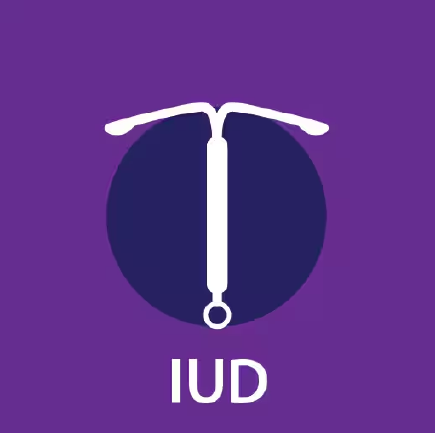
Non-Hormonal IUD (Paraguard, Copper IUD)
What it is: A T-shaped device made of copper that is inserted into the uterus by a healthcare provider. Over 99% effective when inserted correctly, it lasts for 5-10 years, at which point it is no longer effective and must be removed by a healthcare provider. It stops working as soon as it is removed.
Because the copper IUD also begins working as soon as it’s inserted, it can be used as emergency contraception if it is inserted within 5 days of an unprotected sexual encounter.
How it works: It slowly releases copper into the uterus, preventing sperm from fertilizing an egg.
How to get it: It must be given/removed by a healthcare provider, specifically an OB/GYN physician, physician assistant, or nurse practitioner. The procedure is quick and done in the clinic, however it can be painful. Some offices will offer local anesthesia for the procedure, so it’s best to talk to your provider about pain management.
Side effects: Most side effects only last for the first few months after insertion. Common ones include increased breakthrough bleeding (bleeding between periods), heavier periods, cramping, and back pain. Cramping and back pain are especially common during the first few days after the procedure. There is no increased risk of blood clots.
Birth Control Patch
What it is: A patch that sticks to the skin and releases estrogen and progesterone into the body to help prevent pregnancy. It is over 99% effective when used properly. Each patch lasts a week. On day eight, it must be removed and a new patch must be put on. It is changed like this every week for three weeks, until the patch-free week on week four.
How it works: Hormone release into the body.
How to get it: They are available by prescription only.
Side effects: Similar effects as other estrogen and progesterone options, including mood changes, headaches, cramping, breakthrough bleeding, nausea, and an increased risk of blood clots. These typically go away after a few months of use, but see a provider if side effects are severe/interfere with day-to-day life.

Birth Control Shot (Depo-Provera)
What it is: A shot containing progesterone that is given in the arm of a patient every three months. It is 99% effective when taken correctly.
How it works: Keeps the ovaries from releasing an egg and stops the sperm from reaching the egg.
How to get it: The shot must be administered by a provider, so it must be obtained through a doctor’s office.
Side effects: Similar to other hormonal methods, side effects vary between patients. Some side effects include headaches, nervousness, depression, acne, weight gain, appetite changes, and hair loss. Most side effects go away after a few months of receiving injections.
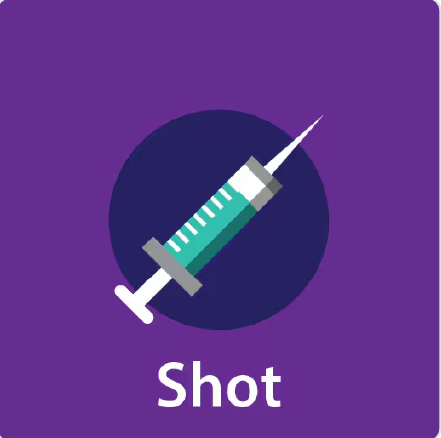
Vaginal Ring
What it is: A small, flexible ring that is inserted into the vagina every month by the patient, not the provider. Similar to some other hormonal methods, it’s 99% effective when used as directed, but closer to 91% for most people.
How it works: It releases estrogen and progesterone that can help prevent pregnancy.
How to get it: See a healthcare provider for a prescription.
Side effects: Similar to other options with estrogen and progesterone, such as the combined pill, including increased risk for blood clots. These typically go away after a few months of use, but see a provider if side effects are severe/interfere with day-to-day life.
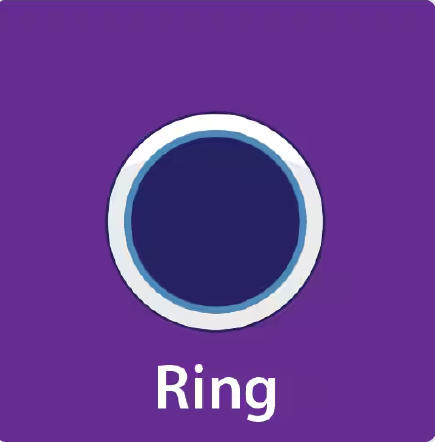
Implant (Nexplanon)
What it is: A thin rod that is inserted into the arm by a healthcare provider and releases progesterone into the body. Over 99% when inserted correctly, it lasts for up to five years, until it is no longer effective and must be removed.
How it works: The progesterone stops sperm from reaching the egg and prevents egg release.
How to get it: Through a healthcare provider.
Side effects: Similar to other hormonal methods, side effects vary between patients. Some side effects include headaches, nervousness, painful periods, and cramping. Most side effects go away after a few weeks.
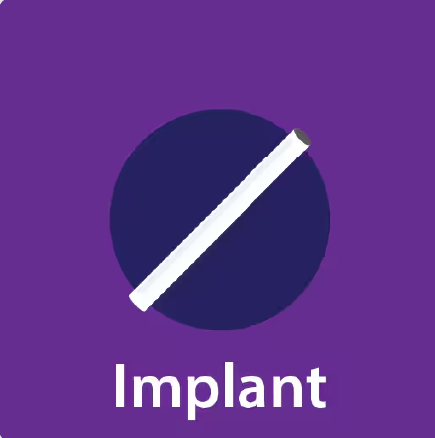
Diaphragm
What it is: A diaphragm is a small, flexible cup that you put into your vagina before having sex. It covers your cervix, which is the opening to your uterus, to help prevent pregnancy. When used with a sperm-killing gel called spermicide, it’s about 88% effective at preventing pregnancy, and this might be better if you use the spermicide every time.
However, the diaphragm can shift out of place if there’s a lot of rough movement during sex, and it takes some practice to get used to putting it in correctly.
Since everyone’s body is different, diaphragms come in different sizes. Changes in your body over time, like pregnancy, gaining or losing weight, can affect how well it fits. If this happens, you might need a new size or switch to a one-size-fits-most diaphragm.
How it works: You put the diaphragm in before sex, and leave it there for at least 6 hours afterward. If you have sex again, you need to add more spermicide. But you shouldn’t leave the diaphragm in for more than 24 hours at a time.
How to get it: You get a diaphragm through a healthcare provider.
Side effects: Include irritation in your vagina if you use spermicide very often. Also, some people notice they get urinary tract infections more often when using a diaphragm.

Fertility Awareness-Based Methods
What it is: Fertility awareness methods (FAMs), also known as natural family planning or the rhythm method, involve watching your menstrual cycle to prevent pregnancy. They can be effective about 77%–98% of the time, This wide variation is because they require care, consistency, and discipline to use. This includes checking your fertility signs and charting your cycle every day, and avoiding sex/using other methods on “fertile” days
How it works: FAMs help identify when you’re most likely to get pregnant—around the time you release an egg, called ovulation—during your fertile days. To avoid pregnancy, you avoid sex or use another form of protection during this period. Common FAMs include the temperature method (i.e., taking your temperature every morning before getting out of bed); the cervical mucus method (i.e., checking the color and amount of vaginal discharge each day); and the calendar method (i.e., recording your cycle over several months to see if it’s usually between 26 and 32 days long; then avoiding unprotected sex on the days you’re most fertile – often days 8–19).
How to get it: Although you don’t need to consult a medical provider to use this method, it may be helpful to speak to a doctor, nurse, or counselor with knowledge about how to use it the right way.
Side effects: N/A
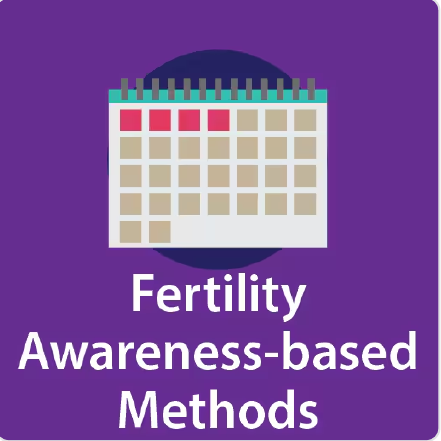
What Is Emergency Contraception?
These are progesterone-only pills that must be taken within a specific time frame after sex to prevent pregnancy. The two main types are Plan B and Ella:
Plan B is available over the counter and must be taken within 3 days of a sexual encounter to be effective. Effectiveness decreases within those 3 days, so it’s best to take it as soon as possible. Plan B is the name-brand and normally costs $40-$50, but generic options can cost as little as $15. Generics will usually be right next to the Plan B package in the store. All of these options are available at most drugstores, pharmacies, or big box stores. Side effects include delayed/early periods, cramping, and nausea, but vary from person to person. For people who are over 165 pounds, Plan B is less effective.
Ella is prescription-only and must be taken within 5 days of a sexual encounter for the best chance at preventing pregnancy. Like Plan B, its effectiveness decreases the longer you wait, so it’s best to take it ASAP. It may be hard to get a doctor’s appointment within the 5-day period following a sexual encounter, but you could try calling your doctor’s office to get the prescription over the phone or going to an urgent care center. Some doctor’s offices also offer same-day telehealth appointments. Ella works well for those who are over 165 pounds but starts to become less effective for those over 195 pounds.
Inserting a copper IUD can be used as emergency contraception if the IUD is inserted within 5 days of a sexual encounter. However, it requires an appointment with a medical provider for insertion, which may be difficult to get within a 5-day timeframe. Some urgent cares offer IUD insertion, but it’s best to call ahead to determine cost and accepted insurance plans. Planned Parenthood offers emergency IUD insertion as well, in addition to other forms of emergency contraception.
Where Can I Get It?
SUNY Geneseo Student Health and Counseling, as well as the Livingston County Center for Sexual Health and Wellness (which sees students on campus twice a week), offer emergency contraception. Information on that, as well as other services available, can be found at this link:
https://www.geneseo.edu/health/sexual-health
Planned Parenthood also offers emergency contraception:
(https://www.plannedparenthood.org/learn/birth-control)
A healthcare provider can work with you to determine which contraceptive option is best for your specific situation. Additionally, any pharmacy or big box store will have Plan B or its generics. Going to an OBGYN or urgent care is the best option for getting a copper IUD inserted or an Ella prescription.
Nurx (www.nurx.com) offers overnight delivery of emergency contraception and can call in Ella prescriptions to a pharmacy. They also offer birth control prescriptions, at-home STI testing, STI treatment, and other medical services not related to sexual health. Most services do not require an appointment. It is also affordable, even without insurance coverage, and offers free shipping.
There’s no two ways about it – abortion has always been a controversial subject, and that’s especially the case these days. No matter what you decide to do about an unplanned pregnancy, you have the right to respectful, medically accurate, non-judgmental health care.
Abortions (medication or surgical) are legal in New York State through 24 weeks; after that, it isn’t possible to terminate a pregnancy unless the fetus is not compatible with life or if necessary to preserve the life of the person who is pregnant. As previously noted, emergency contraception (Plan B) is not the same thing as medication abortion, and it will not terminate an existing pregnancy. Plan B primarily works by blocking fertilization. If someone is pregnant, the egg has already been fertilized, so Plan B will not harm the fetus.
For more information about abortion, click this link:
https://www.plannedparenthood.org/learn/abortion
Crisis pregnancy centers (also known as “pregnancy resource centers” and “pregnancy care clinics”) are nonprofit organizations with the primary aim of keeping women from having an abortion. They often offer free sonograms or screenings or advertise reproductive care options, but pressure those who come in to bring their pregnancies to term. A link to a map of these locations can be found on the “Clinical Services” resource page:
The information on this site is for educational purposes only. It does not replace a personal relationship with a licensed health care provider and is not intended to provide medical advice. We strongly recommend that you make your health care decisions based on your own research and knowledge of your body, in collaboration with one or more licensed health care providers.
The hosting for this website is provided by SUNY Geneseo as a courtesy, but it is not an official College publication. The statements and opinions expressed in content of this website do not represent the official position or policy of SUNY Geneseo.